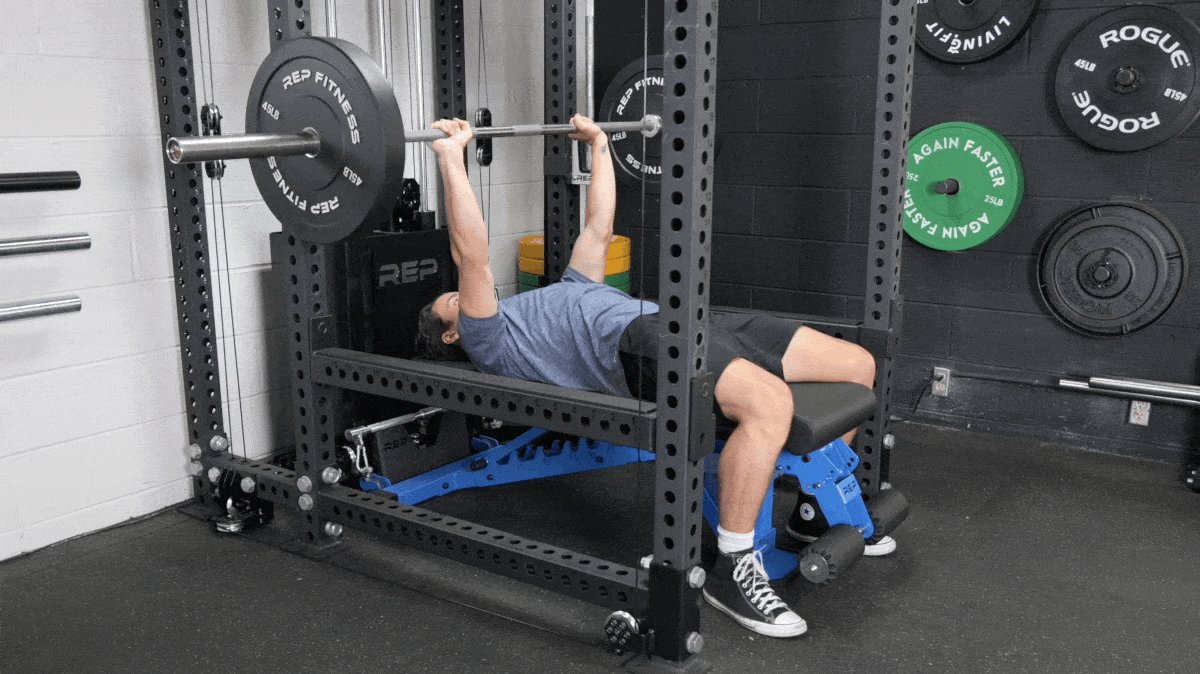Age is just a number — take 56 and 300. The former is the age of retired NFL superstar tight end Shannon Sharpe, and 300 is the amount of weight, in pounds, that Sharpe can comfortably bench press for reps.
- “Don’t make me activate the OLD SHAY,” Sharpe thundered on social media while describing his bench press workout.
Sharpe, a 56-year-old father of three, isn’t taking it easy in the gym during his retirement. Sure, he’s an elite athlete, but we’re going to take a look at his bench press technique and explain how you can gain strength well into your 40s and 50s.
Shannon Sharpe’s Bench Press Workout
Sharpe posted his chest training on social media on Aug. 16, 2024, along with his set-and-rep protocol:
- Set 1: 221.3 pounds
- Set 2: 265.4 pounds
- Set 3: 287.5 pounds
- Set 4: 309.5 pounds
Why the fractional weights? Sharpe was lifting on a barbell and used weight plates measured in kilograms, not pounds. So, 221.3 pounds is 100 kilograms, or “two wheels,” while 309.5 equals 140 kilograms or a three-plate bench across the pond.
[Related: Best Pre-Workout Supplements]
Not only is this an extremely impressive display of strength at any age, but it also proves that you can continue to lift heavy well into middle age.
Scientific research tells us that strength doesn’t diminish with age, provided you have a history of strength training under your belt that you continue to engage with as you get older:
- One study from March 2024 showed that powerlifters in their 60s can continue to increase their strength and, on average, don’t start seeing performance losses until their 70s. (1)
- In 2018, Fernandes et al. (2) observed no significant differences between men in their 20s and those aged 35-54 regarding rate of perceived exertion, power output, and velocity loss between sets of squats.
How To Bench Press Like Shannon Sharpe

[Related: Best Post-Workout Supplements]
We can’t guarantee you’ll push 300-plus on the bench, but we can take a look at Sharpe’s bench press technique and highlight the most important elements.
- Sharpe warms up thoroughly with an appropriate number of ramp-up sets instead of starting with his working weight.
- A proper spinal arch during his bench press setup helps with shoulder stability.
- Placing his feet behind his knees and pushing into the floor with his toes improves Sharpe’s leg drive and helps keep his hips on the bench.
- Sharpe uses a comfortable grip width with his forearm perpendicular to the barbell at the bottom.
- Sharpe controls the lowering portion, or the eccentric, to maximize strength and build muscle.
More Training Content
- The 2 Best Leg Exercises for Muscle (if You Can’t Do Anything Else)
- The Laziest Way to Do More Pull-Ups
- Why Bodybuilders Do Leg Curls Before Squats
References
- Latella C, van den Hoek D, Wolf M, Androulakis-Korakakis P, Fisher JP, Steele J. Using Powerlifting Athletes to Determine Strength Adaptations Across Ages in Males and Females: A Longitudinal Growth Modelling Approach. Sports Med. 2024 Mar;54(3):753-774. doi: 10.1007/s40279-023-01962-6. Epub 2023 Dec 7. PMID: 38060089.
- Fernandes, J.F.T.; Lamb, K.L.; Twist, C. Internal Loads, but Not External Loads and Fatigue, Are Similar in Young and Middle-Aged Resistance-Trained Males during High Volume Squatting Exercise †. J. Funct. Morphol. Kinesiol. 2018, 3, 45.